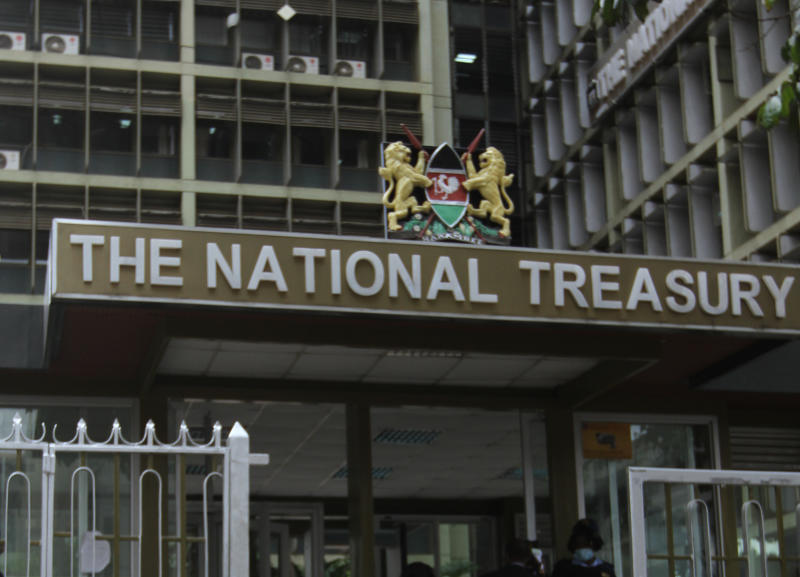 The National Treasury building, Nairobi. July 9, 2020. [Elvis Ogina, Standard]
The National Treasury building, Nairobi. July 9, 2020. [Elvis Ogina, Standard]
The six-month anaesthesia on Kenya’s debt repayment burden will wear off in July, with the pain of meeting its debt obligations rising sharply.
In the upcoming 2021-22 financial year, the country’s debt service is projected to increase to Sh436 billion, up from an earlier estimate of Sh406 billion.
This lends credence to experts’ opinion that the cash-strapped National Treasury has only been postponing its liquidity crisis through the debt service suspension initiative (DSSI) done under the G-20 framework.
Payment of public debts and interest takes first charge, a situation that has seen most of the country’s revenues go to paying off creditors at the expense of other critical public services such as health, education and security.
To free up some cash, the government has been negotiating with some of its bilateral lenders for debt repayment holidays.
In the Draft Budget Policy Statement (BPS) of 2021, Kenya made savings of close to Sh73.5 billion through the DSSI in the financial year ending June.
The report shows the country will pay Sh134.1 billion in foreign interest compared to Sh154.7 billion that had been projected in the Budget Review Outlook Paper (BROP) released in September last year.
The revised principle payments were Sh126.7 billion, down from the initial estimates of Sh179.6 billion.
Kenya made savings of about Sh32.9 billion after it got a debt service suspension from 10 Paris Club countries.
The countries that agreed to step in for Kenya included Germany, France, South Korea, Denmark, Italy, the US, Belgium, Spain, Canada and Japan.
China, a member of the G-20, also gave Kenya a debt repayment holiday, with the country saving close to Sh24.7 billion.
The freed-up cash is expected to be used to address the effects of the coronavirus pandemic on the economy.
However, the suspension will last for only six months after which the country will start repaying its external debt, including some interest payments that will have accumulated during this period.
A new report by the International Monetary Fund (IMF) shows that Kenya is one of the countries with a heavy debt repayment burden this year.
“Average debt levels are projected to peak in 2021, with debt service relative to tax revenues exceeding 20 per cent in Ghana, Kenya, Myanmar, Nigeria and Zambia and an upward debt trajectory in some, especially oil-exporting countries, such as Nigeria,” read the IMF’s 2021 Fiscal Monitor Update.
A weak shilling has also elevated the country’s risk to debt distress due to the fact that 51 per cent of the debt is held in foreign currencies.
“This has led to an increase in debt service budget in local currency and also increase on the stock of debt without inflows,” reads part of BPS.
However, the government is optimistic that the economy will recover from the Covid-19 pandemic and the debt indicators will not worsen.
A note by Genghis Capital, an investment bank, flagged the “savings” arising from the DSSI.
“The missing link that will spring up with the Supplementary Budget I will be the ring-fencing of these monies for targeted spending, while the international financial institutions are expected to implement a monitoring system for the intended use of the ‘savings’,” said Genghis Capital.
As part of a long-term solution to the debt problem, the government is looking at debt restructuring and cancellations.
dakure@standardmedia.co.ke




No comments :
Post a Comment